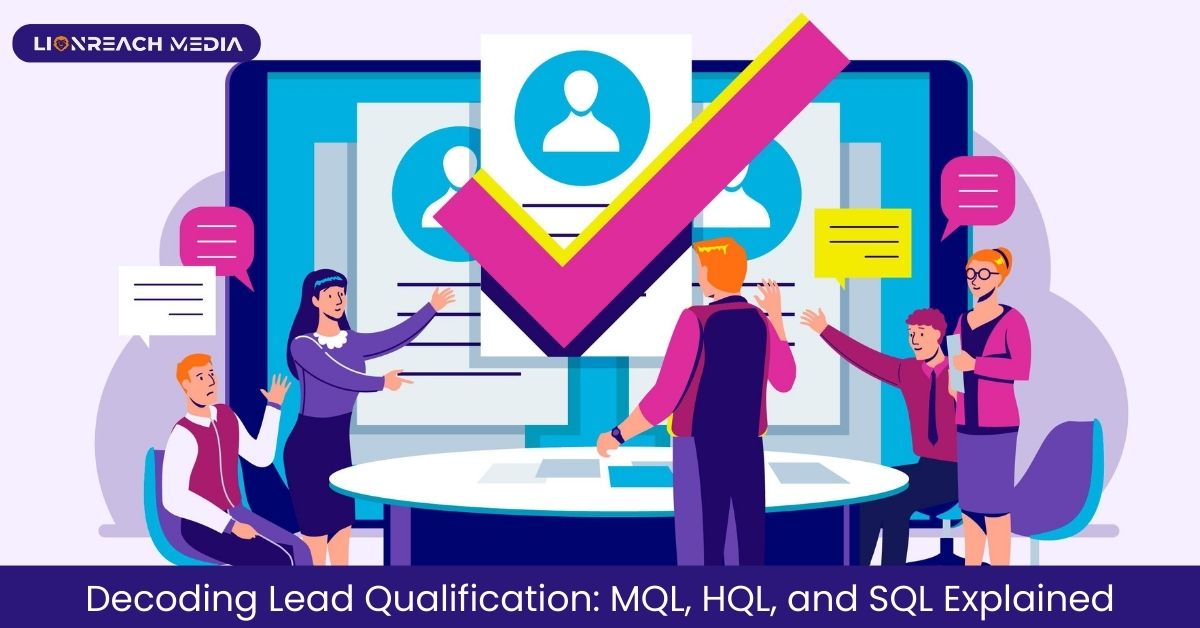
Decoding Lead Qualification: MQL, HQL, and SQL Explained
In the world of marketing and sales, not all leads are created equal. Businesses face the challenge of identifying and prioritizing leads that have the highest potential for conversion into paying customers. This process, known as lead qualification, involves categorizing leads into different stages based on their readiness to make a purchase. In this blog, we will decode the three essential stages of lead qualification: MQL, HQL, and SQL, and explain their significance in the sales and marketing funnel.
Understanding MQL: Marketing Qualified Leads
Marketing Qualified Leads (MQLs) are the first stop in the lead qualification journey. MQLs are leads who have expressed some level of interest in your product or service, typically through interactions with your marketing efforts. These interactions might include downloading a whitepaper, subscribing to a newsletter, or visiting specific pages on your website. MQLs have shown potential, but they’re not yet ready for a sales pitch.
MQLs are typically identified based on various criteria, including demographics (such as job title or industry) and behavioral factors (such as website engagement and content downloads). The goal at this stage is to capture their attention and nurture them with relevant content and communication until they move further down the funnel.
Moving on to HQL: Human Resources Qualified Leads
In B2B (Business-to-Business) contexts, where businesses are selling to other businesses, Human Resources Qualified Leads (HQLs) come into play. HQLs are a step ahead of MQLs and are often more relevant to your business. These leads are not only interested but also possess decision-making power within their organization.
HQLs are carefully vetted by the marketing team and are considered a good fit for your offerings. They might be the key decision-makers, like CEOs, CTOs, or department heads, who can influence or authorize purchases. At this stage, the focus is on further engagement to understand their needs, challenges, and readiness for a sales conversation.
The Ultimate Goal: SQL – Sales Qualified Leads
The pinnacle of the lead qualification journey is the Sales Qualified Lead (SQL). SQLs are highly vetted and deemed highly likely to make a purchase. They have demonstrated not only interest but also a clear need, budget, and timeline for making a purchase. SQLs are ready for direct sales engagement.
The transition from HQL to SQL often involves in-depth communication to understand the lead’s specific pain points and how your product or service can solve them. Once a lead reaches the SQL stage, they are handed over to the sales team, where the focus is on closing the deal and converting them into a paying customer.
The Importance of Lead Qualification
Lead qualification is a crucial aspect of the sales and marketing process. It ensures that both the marketing and sales teams are investing their time and resources effectively. By categorizing leads into MQLs, HQLs, and SQLs, businesses can tailor their approach to each group’s readiness and specific needs.
Conclusion:
Understanding and implementing a well-defined lead qualification process is essential for any business seeking to optimize its sales and marketing efforts. By decoding MQL, HQL, and SQL, you can create a more efficient and targeted approach to turning leads into loyal customers. Remember that not all leads are created equal, but with the right strategies, you can maximize your chances of conversion and business growth.
